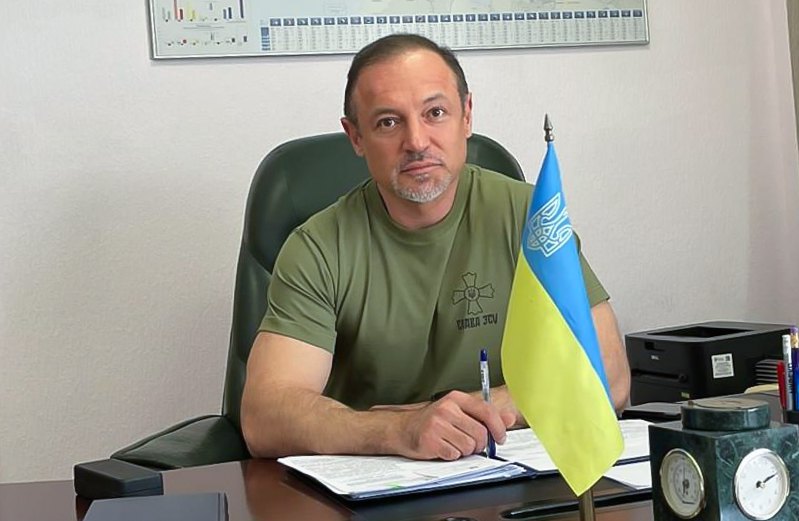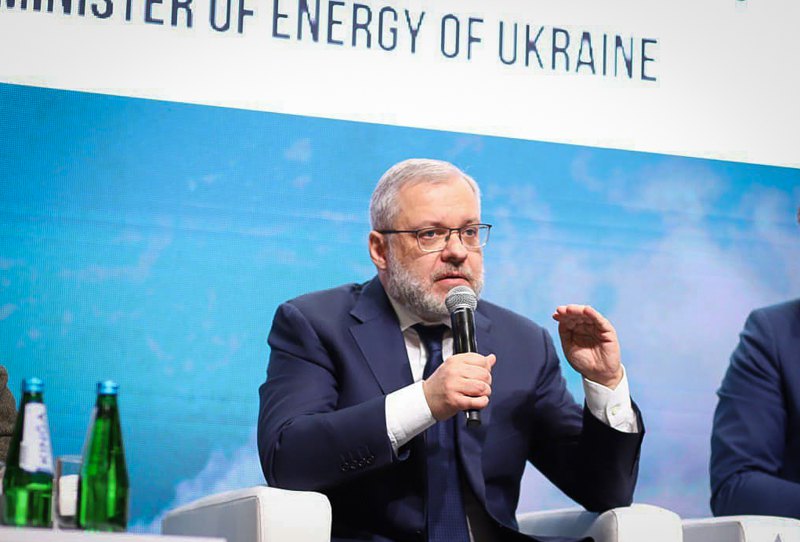Украина вынуждена была обратиться за экстренной помощью к Евросоюзу дважды из-за дефицита электроэнергии, что вынудило её приобретать самую дорогую из всех видов импортируемой энергии. Не было альтернативы: либо отключение сначала для предприятий, а затем для населения. Недостаток электроэнергии обусловлен несколькими факторами: падением температуры, проблемами с обычными импортными поставками энергии и аварийными отключениями блоков ТЭС. Большинство из них уже устранены. Погода дала энергетической системе небольшой отдых, так как температура поднялась на два дня. Однако с началом этой недели в Украину вернулись морозы, и потребление энергии снова возросло. К этому может добавиться еще один фактор — возможные удары России по инфраструктуре.
Когда возник дефицит электроэнергии?
Украине пришлось по меньшей мере дважды просить аварийную помощь из Европейского Союза на прошлой неделе. В первый раз в среду, 22 ноября: в энергосистеме зафиксировали значительный дефицит электроэнергии; увеличить генерацию тока Украина не смогла – не было резервов.
«Укрэнерго было вынуждено активировать аварийную помощь от операторов систем передачи Румынии, Словакии, Польши общим объемом 1800 МВт‧ч», — пояснили в компании.
Для понимания такой объем электроэнергии почти равен мощности Хмельницкой атомной станции. Два ее блока производят 2000 МВт.
Нехватку в энергосистеме зафиксировали и в прошлый четверг. Укрэнерго призвало украинцев экономить.
«Для энергосистемы это самое сложное время – с 17.00 до 19.00 длится период максимального потребления. И мы уже видим, что наш график (потребление) растет. В условиях, когда несколько блоков электростанций по-прежнему ремонтируются и не могут работать, это нарушает баланс между потреблением и производством электроэнергии, что является основным условием безопасной работы энергосистемы. Импортированной электроэнергии также недостаточно для покрытия дефицита в энергосистеме – вместо технически возможного максимума 1200 МВт в отдельные часы есть максимум до 609 МВт», – подчеркнули в Укрэнерго.
Отключений бытовых потребителей удалось избежать. А уже с пятницы ситуация существенно улучшилась – дефицита не фиксировали.

Почему не хватает?
Причин несколько. Первая – морозы. На неделе в некоторых регионах отметки на термометре опустились до -8°С. Чем ниже температура, тем больше тока требуется государству.
«Погода стала серьезным фактором. Рост потребления из-за морозов составил около 10%. А вы знаете, что мы вошли в отопительный сезон, по сути, без резервов мощности, потому что из-за разрушений и повреждений все невозможно восстановить», – подчеркнул директор энергетических программ Центра Разумкова Владимир Омельченко.
В Центре исследований энергетики отмечают, что если температура воздуха будет держаться на уровне -8°С и ниже, отключение света для населения может стать реальностью. Графики ограничений электропотребления компании обнародовали еще в начале осени. Специалисты призывают потребителей подготовиться к такому варианту развития событий.
Еще один фактор, приведший к недостатку электроэнергии – высокая аварийность на тепловых электростанциях. На минувшей неделе сразу три блока ТЭС останавливали для краткосрочных ремонтов, сообщало Министерство энергетики. В ведомстве добавили: больше всего электроэнергии для страны в настоящее время генерирует атомная энергетика. Работают 9 блоков АЭС, производящих 55% от всего количества. А вот тепловые станции играют другую очень важную для энергосистемы роль – маневрирование. Они могут в короткие сроки увеличивать или уменьшать генерацию тока в зависимости от потребности.

«Обычно это просто износ оборудования, потому что абсолютное большинство блоков тепловых электростанций построено еще в 60-х годах прошлого века. И понятно, что иногда выходят из строя. Они нуждаются в постоянном наблюдении. Иногда срабатывает аварийная защита, если, например, качество электроэнергии не соответствует установленной. Иногда выходит из строя трансформаторное оборудование. Диспетчер этого не видит. Он сидит в Киеве, только может констатировать факт. Вот и все. Было 100 мегаватт или 300, но сейчас ноль», – объяснил доктор наук, эксперт по энергетике Геннадий Рябцев.
Третья причина дефицита – небольшие объемы импорта из Европейского Союза. И тут злую шутку с нами сыграло законодательство. В Украине на рынке электроэнергии действует система прайскепов, то есть максимальных граничных цен на электроэнергию. И эти ограничения очень часто не позволяют в полном объеме импортировать ток. Именно поэтому в критических ситуациях государство вынуждено просить аварийную помощь у Европейского Союза.
«Насколько это дорого? Можно сказать коротко, что примерно аварийная помощь может быть на 50% дороже, чем покупать по контрактам поставки импортной электрической энергии», – констатировал директор энергетических программ Центра Разумкова Владимир Омельченко.

Этот вопрос в начале ноября уже рассматривался на заседании СНБО. А президент Владимир Зеленский рекомендовал энергорегулятору (НКРЭКУ) привести максимальные предельные цены на ток в соответствие.
«Проработать вопрос обеспечения экономических условий для привлечения импорта электрической энергии во время прохождения осенне-зимнего периода 2023/24 года», — говорится в указе президента.
В конце концов, НКРЭКУ повысила прайскепы, но новые цены заработают с 1 декабря. О полной отмене такого механизма речь не идет.
«Решали две задачи. Первое – это дальнейшая, пошаговая либерализация нашего энергорынка и приближение его правил к правилам Европейского Союза. Второе – фактически мы создали инвестиционные условия для привлечения к генерации высокоманевровых мощностей, которые могут быть включены в течение суток в очень короткий период, но обеспечить пиковую нагрузку, когда спрос на электрическую энергию самый большой», – пояснил глава НКРЭКУ Константин Ущаповский.

Массированная атака дронами
В субботу ночью Россия выпустила по Украине рекордное количество беспилотников. Воздушные силы сообщили: бомбить Украину летели 75 «шахедов». Украинскому ПВО не удалось сбить только один дрон. Главной целью для россиян был Киев.
«Несколько мощных магистральных линий электропередач, питающих Киев и города вокруг, были повреждены и отключились ночью из-за этой плотной и очень мощной атаки шахедов», – сообщал председатель правления НЭК «Укрэнерго» Владимир Кудрицкий.
12 тысяч потребителей в столице остались без света. Однако электроснабжение возобновили в тот же день. В целом нашествие не имело серьезных последствий для энергосистемы Украины.
«Такого количества – 75 дронов – еще никогда не применяли. Итак, действительно можем говорить, что Россия пыталась испытать новые маршруты и траектории полета. Это для них был эксперимент в преддверии зимы и низких температур», – отметил военно-политический обозреватель группы «Информационное сопротивление» Александр Коваленко.

Будут ли отключение света зимой?
Из-за ухудшения погоды на выходных эта неделя будет особенно сложной, подчеркнули в Укрэнерго. У компании не исключают вероятности нового дефицита электроэнергии.
«Мы надеемся, что аварийность блоков на электростанциях будет ниже и у нас будет больше генерации для того, чтобы покрывать потребление», — рассказал Владимир Кудрицкий.
Минувшей зимой россияне атаковали около половины объектов украинской энергосистемы, сообщил министр энергетики Герман Галущенко. Он считает, что все восстановить невозможно, но страна хорошо подготовилась к зиме. Тем временем ремонты на некоторых объектах продолжаются. В правительстве убеждены, что первый месяц отопительного сезона Украина прошла стабильно: запасы топлива достаточно, техническое состояние систем удовлетворительное. Но и Россия пока не прибегает к массированным ракетным нападениям.
Да, они ежедневно атакуют энергосистему, это правда. Пытаются уничтожить максимальное количество объектов. Такой массированности, как первый удар, 10 октября (в прошлом году), где-то до ста ракет одновременно, одновременно атаковавших все объекты, пока не было. Но, я думаю, они готовятся к этому. У нас гораздо сильнее ПВО сейчас», – уверен Герман Галущенко.

Если графики отключений света и придется использовать, то они будут справедливыми. Контролировать процесс обещает Министерство энергетики. В то же время в Укрэнерго еще раз призвали украинцев экономить электроэнергию в кризисных ситуациях. Причем это касается не только населения, но и бизнеса.
«Если предприятия будут переносить по возможности потребление электроэнергии на ночное время, то у нас есть все шансы обойтись и без отключений», – сказал Владимир Кудрицкий.
В Центре исследований энергетики уверены: цели для российских обстрелов остаются неизменными. Как и в прошлую зиму, они будут пытаться разбомбить электрическую генерацию. Вероятно, тоже попытаются оставить города без тепла. Но это куда более трудная задача.
«Надо признать, что именно теплоэлектроцентрали, которых в Украине все-таки чуть меньше, чем теплоэлектростанций (ТЭЦ), сконцентрированы в Киеве, есть в Харькове. Большое количество других городов не полностью зависит от своей теплоэлектроцентрали. Как, например, в Одессе где-то 30% города – это ТЭЦ, а 70% города – маленькие котельные, расположенные по всей Одессе. И, соответственно, их повредить будет гораздо труднее, они дают такой децентрализованный запас прочности для систем отопления», – подчеркнул директор Центра исследований энергетики Александр Харченко.



